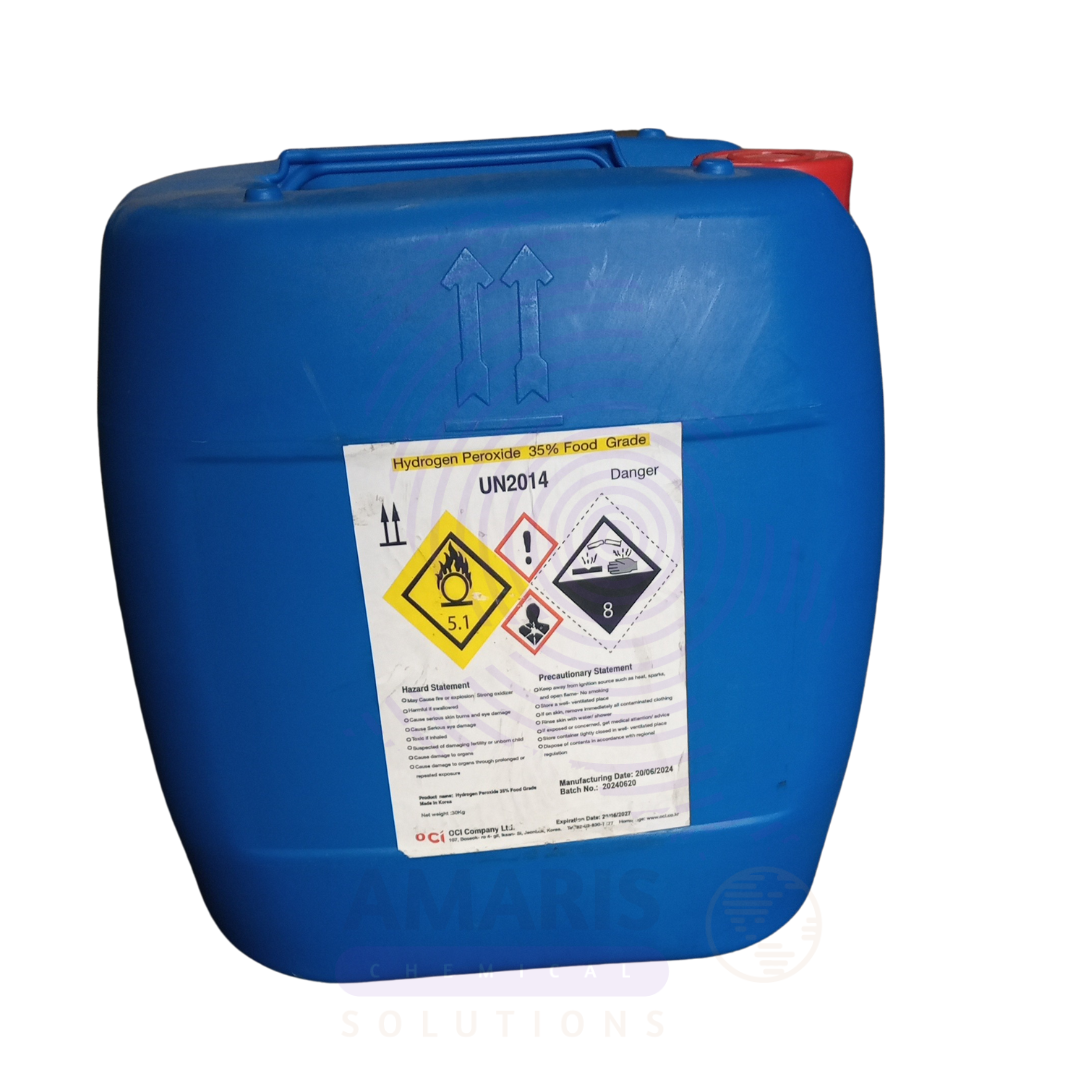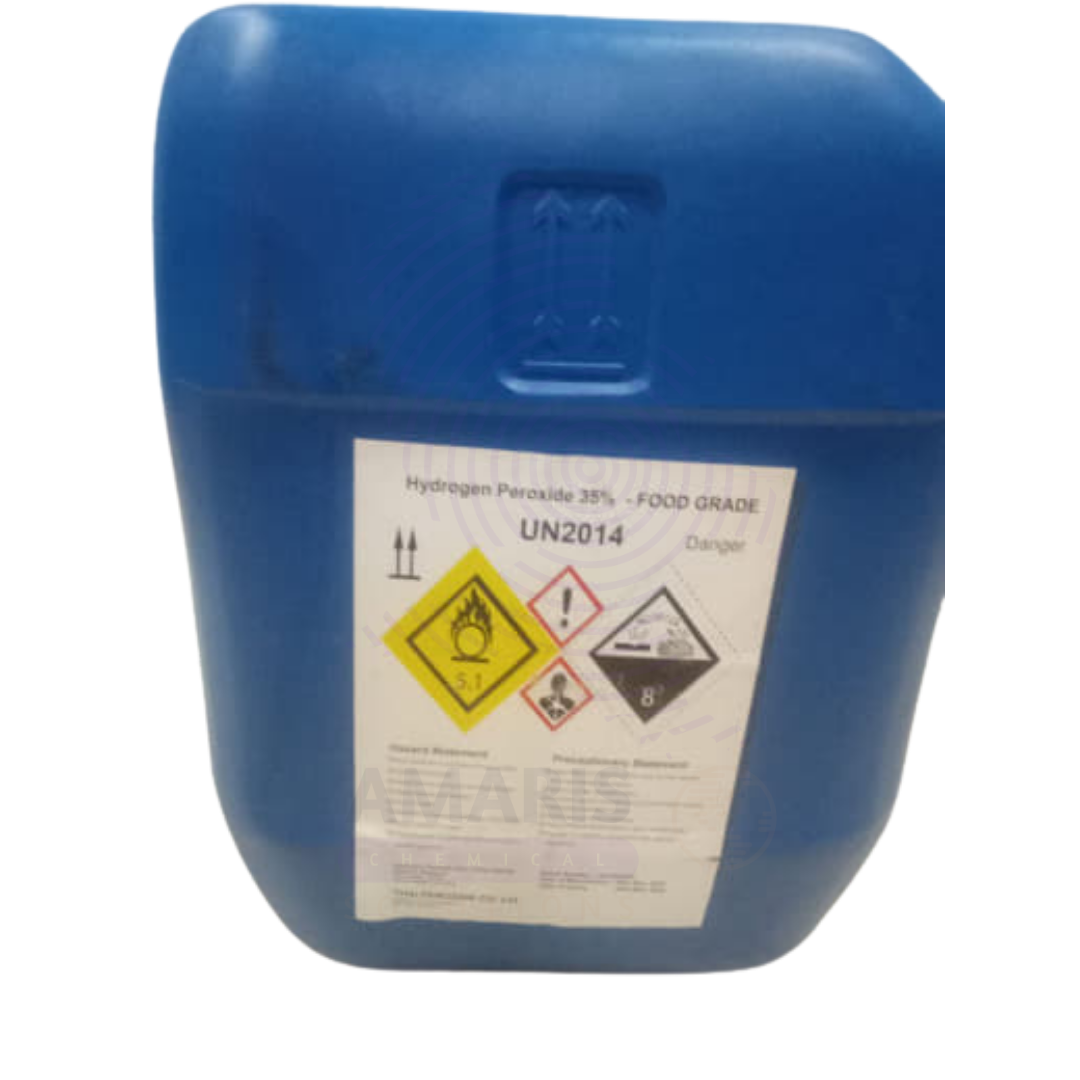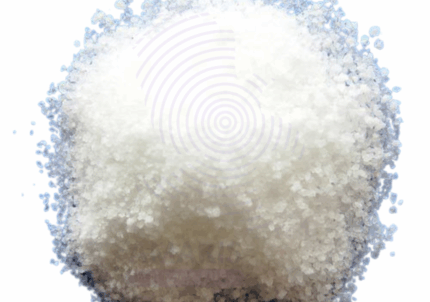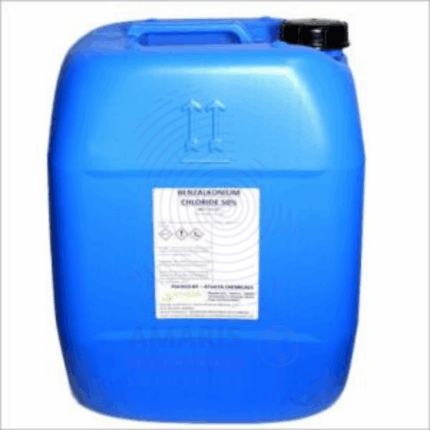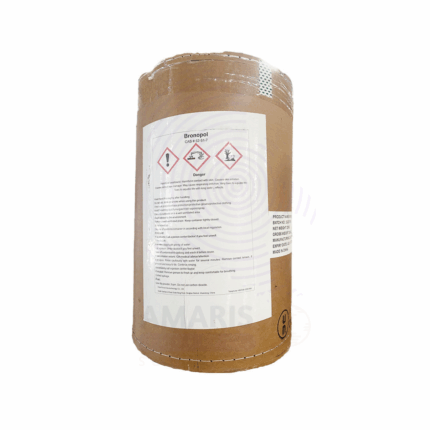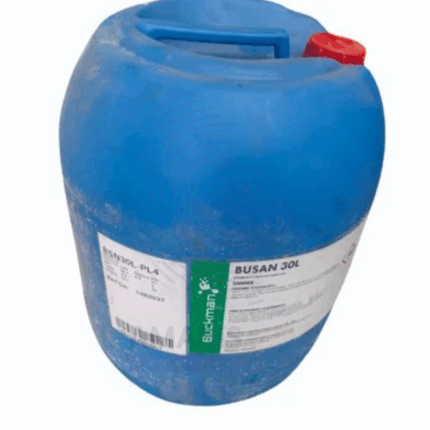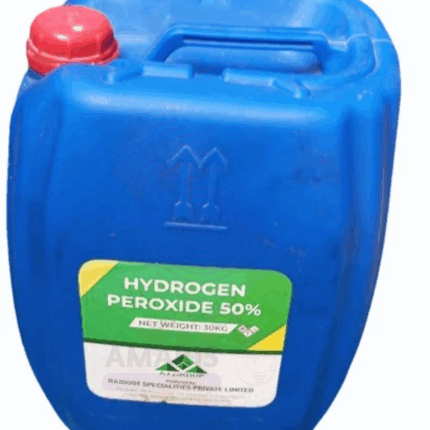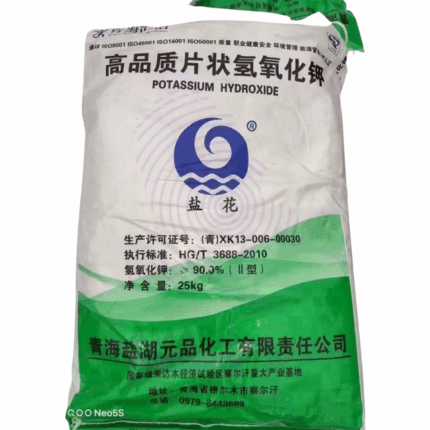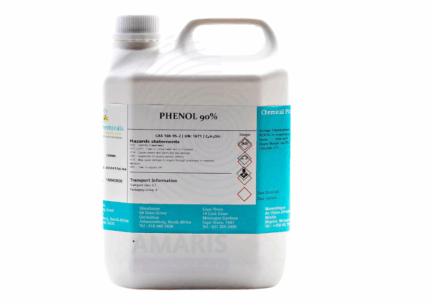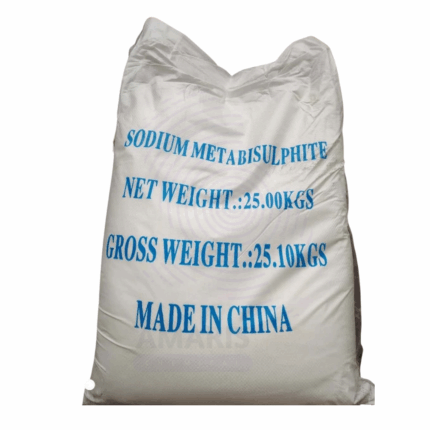

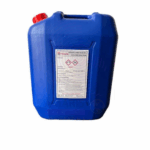
Hydrofluoric Acid
$ 7.90 Original price was: $ 7.90.$ 7.74Current price is: $ 7.74.
Hydrogen Peroxide Food Grade
$ 1.55 Original price was: $ 1.55.$ 1.44Current price is: $ 1.44.
Whatsapp Order
Hydrogen Peroxide Food Grade is a highly concentrated aqueous solution of hydrogen peroxide (H₂O₂), formulated specifically for use in food processing and related applications. It appears as a clear, colorless liquid with a slightly sharp, acrid odor. Renowned for its powerful oxidizing and bleaching properties, hydrogen peroxide is a strong antimicrobial agent and environmentally friendly disinfectant that decomposes into water and oxygen, leaving no harmful residues. The food-grade designation ensures compliance with strict purity standards, making it suitable for direct and indirect food contact uses, including sterilization, sanitation, and preservation.
Description
Table of Contents
Toggle
Hydrogen Peroxide Food Grade
Primary Uses
- Food Industry
- Sanitization and Disinfection: Used extensively for sterilizing food contact surfaces, equipment, and packaging materials to reduce microbial contamination and extend shelf life without chemical residues.
- Food Preservation: Employed as a bleaching and oxidizing agent in processing flour, cheese, and other food products to improve texture, color, and shelf stability.
- Bottle and Packaging Sterilization: Vital in aseptic packaging processes to sanitize containers and ensure product safety, especially for dairy, beverages, and liquid foods.
- Washing Agent: Used to sanitize fruits, vegetables, and other raw food materials by reducing microbial load and removing pesticide residues.
- Dairy Processing: Used in cleaning-in-place (CIP) systems for sterilization of milking equipment and dairy processing lines to prevent spoilage and contamination.
- Pharmaceutical and Cosmetic Industries
- Utilized in the production and sterilization of pharmaceutical products and personal care items, ensuring microbial control while complying with food-grade safety standards.
- Water Treatment
- Applied for disinfection and oxidation of drinking water and wastewater in food production facilities to maintain hygiene and comply with regulatory standards.
- Agriculture
- Used for seed treatment and crop sanitation to reduce fungal and bacterial pathogens, promoting healthier growth and yield.
Secondary Uses
- Textile Industry
- Used as a bleaching and disinfecting agent in the production of food-grade textiles such as packaging fabrics and food wrapping materials.
- Laboratory Applications
- Employed as an oxidizing agent and sterilizer in microbiology and food safety testing laboratories.
- Cleaning and Maintenance
- Used in sanitary cleaning agents for food processing plants, hospitals, and other sensitive environments requiring residue-free disinfection.
Additional information
| PACK SIZE |
30kg |
|---|
KEY PRODUCT FEATURES
1. Basic Identification Attributes
- Chemical Name (IUPAC): Hydrogen peroxide (aqueous solution)
- Common/Trade Name: Hydrogen Peroxide 35% Food Grade
- CAS Number: 7722-84-1
- HS Code: 2847.00.00
- Molecular Formula: H₂O₂
- Synonyms: Peroxide, Hydrogen peroxide solution, HP 35% FG
2. Physical & Chemical Properties
- Physical State: Clear, colorless liquid
- Odor: Slightly sharp, acrid
- Boiling Point: Approximately 108 °C (decomposes before boiling)
- Density: ~1.13 g/cm³ (35% concentration)
- Solubility: Miscible with water
- pH: Slightly acidic (typically 3.5 to 4.5)
- Stability: Decomposes slowly releasing oxygen; stabilized with trace amounts of inhibitors
3. Safety & Hazard Attributes
- GHS Classification:
- Oxidizing liquid: Category 1
- Skin corrosion/irritation: Category 1B
- Serious eye damage/eye irritation: Category 1
- Toxicity: Moderate irritant; harmful if swallowed or in contact with skin/eyes
- Exposure Limits: OSHA PEL 1 ppm (Ceiling) for vapor (varies with jurisdiction)
4. Storage & Handling Attributes
- Container Type: High-density polyethylene (HDPE) or stainless steel containers
- Storage Conditions: Store in cool, ventilated, shaded areas away from direct sunlight, heat, and incompatible materials such as organic substances and metals
- Shelf Life: Typically 6-12 months under recommended storage
- Handling Notes: Use with adequate ventilation; avoid contact with combustible materials
5. Regulatory & Compliance Attributes
- Complies with FDA and other food safety regulatory standards for food-grade hydrogen peroxide
- Approved for direct and indirect contact with food processing and packaging equipment
- Registered and monitored under relevant chemical safety laws (REACH, OSHA, EPA)
6. Environmental & Health Impact
- Biodegradability: Breaks down rapidly into water and oxygen, environmentally friendly
- Ecotoxicity: Low toxicity to aquatic organisms at typical use concentrations
- Bioaccumulation: Not expected to bioaccumulate
- Carcinogenicity/Mutagenicity: Not classified
SAFETY HANDLING PRECAUTIONS
Safety Handling Precautions
- PPE Required: Chemical-resistant gloves, safety goggles, face shield, protective apron
- Handling Guidelines: Use in well-ventilated areas; avoid inhalation of vapors and contact with skin or eyes; do not mix with incompatible substances such as organic materials or strong reducing agents
- Hygiene Practices: Wash hands thoroughly after handling; no eating or smoking in handling areas
First Aid Measures
- Inhalation: Move affected person to fresh air; seek medical attention if symptoms persist
- Skin Contact: Rinse immediately with plenty of water for at least 15 minutes; remove contaminated clothing; seek medical advice if irritation occurs
- Eye Contact: Flush eyes with water for at least 15 minutes; seek immediate medical attention
- Ingestion: Do not induce vomiting; rinse mouth and seek medical help immediately
Firefighting Measures
- Fire Hazards: Not flammable but supports combustion of other materials; can increase fire intensity
- Extinguishing Media: Use water spray, foam, or dry chemical; avoid using combustible materials for extinguishing
- Special Precautions: Firefighters should wear full protective gear and self-contained breathing apparatus
- Decomposition Products: Oxygen gas and water vapor, may accelerate burning of other materials
Related products
Ammonium Cupric Chloride
Ammonium Cupric Chloride is a blue-green crystalline inorganic compound composed of copper, ammonium, and chloride ions. It is widely used as a source of copper in agricultural fungicides and bactericides, as well as in electroplating, chemical synthesis, and textile dyeing. Its antimicrobial properties make it valuable for controlling fungal and bacterial infections in plants. Additionally, it serves as a precursor in various industrial and laboratory applications.
Benzyl Konium Chloride
Benzyl Konium Chloride (BAC) 50% is a quaternary ammonium compound with potent antimicrobial and disinfectant properties. It is a cationic surfactant widely used for its bactericidal, fungicidal, and virucidal effects. This clear to pale yellow liquid concentrate is highly soluble in water and is commonly used in healthcare, sanitation, and industrial hygiene applications. BAC 50% solutions serve as active ingredients in disinfectants, sanitizers, and antiseptics due to their effectiveness against a broad spectrum of microorganisms.
Bronopol
Bronopol (2-Bromo-2-nitropropane-1,3-diol) is a water-soluble, white crystalline powder or granules with a slight odor. It is a synthetic antimicrobial agent widely used as a preservative in personal care products, pharmaceuticals, cosmetics, and industrial applications. Bronopol exhibits broad-spectrum bactericidal and fungicidal activity, making it effective against a wide range of microorganisms. It works by releasing active formaldehyde slowly, which disrupts microbial metabolism and reproduction.
Busan
Busan is a brand name associated with a comprehensive range of specialty chemicals, primarily including surfactants, dispersants, and performance additives. These products are engineered to optimize the properties of coatings, paints, inks, adhesives, and other industrial formulations. Busan specialty chemicals enhance formulation stability, improve pigment dispersion, control rheology, and boost wetting and flow characteristics, leading to superior application and end-use performance. Designed for versatility and efficiency, Busan products are widely used across the coatings, printing, plastics, and chemical manufacturing industries.
Hydrogen Peroxide Tech Grade
Hydrogen Peroxide Tech Grade is a highly concentrated aqueous solution of hydrogen peroxide (H₂O₂) designed primarily for industrial and technical applications. It is a clear, colorless liquid with a sharp, acrid odor. Known for its strong oxidizing, bleaching, and disinfecting properties, this tech-grade formulation is typically used where high reactivity is required, often in non-food processes. It decomposes into environmentally benign by-products—water and oxygen—making it a preferred agent for sustainable industrial processes.
Potassium Hydroxide
Potassium Hydroxide is a highly concentrated, caustic alkaline chemical available as a solid (pellets, flakes) or concentrated aqueous solution. It is a strong base widely used in industrial processes, chemical manufacturing, and as a reagent. Potassium Hydroxide provides excellent neutralizing, saponifying, and cleaning properties and is essential in producing potassium soaps, biodiesel, fertilizers, and various chemical compounds. Its high purity and concentration (90%) make it suitable for demanding applications requiring strong alkalinity.
Sasol Phenol
Sasol Phenol is a high-purity, industrial-grade phenol produced by Sasol, widely used as a key raw material in the manufacture of plastics, resins, and chemicals. Phenol is an aromatic organic compound characterized by a hydroxyl group (-OH) attached to a benzene ring. It serves as a precursor in producing bisphenol A, caprolactam, and phenolic resins. Sasol Phenol is known for its consistent quality, purity, and suitability for diverse industrial applications including chemical synthesis, pharmaceuticals, and adhesives.
Sodium Metabisulphite
Sodium Metabisulphite is a white crystalline powder widely used as an antioxidant, disinfectant, and preservative. It dissolves readily in water, releasing sulfur dioxide, which acts as a powerful antimicrobial and antioxidant agent. This chemical finds broad applications in food processing, water treatment, pharmaceuticals, and industrial manufacturing to prevent spoilage, control microbial growth, and protect equipment from corrosion.


 Preservatives(food)
Preservatives(food) Flavor Enhancers
Flavor Enhancers Acidulants
Acidulants Sweeteners
Sweeteners Antioxidants
Antioxidants Colorants(food)
Colorants(food) Nutraceutical Ingredients (food)
Nutraceutical Ingredients (food) Nutrient Supplements
Nutrient Supplements Emulsifiers
Emulsifiers
 Collectors
Collectors Dust Suppressants
Dust Suppressants Explosives and Blasting Agents
Explosives and Blasting Agents Flocculants and Coagulants
Flocculants and Coagulants Frothers
Frothers Leaching Agents
Leaching Agents pH Modifiers
pH Modifiers Precious Metal Extraction Agents
Precious Metal Extraction Agents
 Antioxidants(plastic)
Antioxidants(plastic) Colorants (Pigments, Dyes)
Colorants (Pigments, Dyes) Fillers and Reinforcements
Fillers and Reinforcements Flame Retardants
Flame Retardants Monomers
Monomers Plasticizers
Plasticizers Polymerization Initiators
Polymerization Initiators Stabilizers (UV, Heat)
Stabilizers (UV, Heat)
 Antifoaming Agents
Antifoaming Agents Chelating Agents
Chelating Agents Coagulants and Flocculants
Coagulants and Flocculants Corrosion Inhibitors
Corrosion Inhibitors Disinfectants and Biocides
Disinfectants and Biocides Oxidizing Agents
Oxidizing Agents pH Adjusters
pH Adjusters Scale Inhibitors( water)
Scale Inhibitors( water)
 Antioxidants(cosmetic)
Antioxidants(cosmetic) Emollients
Emollients Fragrances and Essential Oils
Fragrances and Essential Oils Humectants
Humectants Preservatives
Preservatives Surfactants(cosmetic)
Surfactants(cosmetic) Thickeners
Thickeners UV Filters
UV Filters
 Fertilizers
Fertilizers Soil Conditioners
Soil Conditioners Plant Growth Regulators
Plant Growth Regulators Animal Feed Additives
Animal Feed Additives Biostimulants
Biostimulants Pesticides (Herbicides, Insecticides, Fungicides)
Pesticides (Herbicides, Insecticides, Fungicides)
 Active Pharmaceutical Ingredients (APIs)
Active Pharmaceutical Ingredients (APIs) Excipients
Excipients Solvents(pharmaceutical)
Solvents(pharmaceutical) Antibiotics
Antibiotics Antiseptics and Disinfectants
Antiseptics and Disinfectants Vaccine Adjuvants
Vaccine Adjuvants Nutraceutical Ingredients (pharmaceutical)
Nutraceutical Ingredients (pharmaceutical) Analgesics & Antipyretics
Analgesics & Antipyretics
 Analytical Reagents
Analytical Reagents Solvents(lab)
Solvents(lab) Chromatography Chemicals
Chromatography Chemicals Spectroscopy Reagents
Spectroscopy Reagents microbiology-and-cell-culture-reagents
microbiology-and-cell-culture-reagents Molecular Biology Reagents
Molecular Biology Reagents Biochemical Reagents
Biochemical Reagents Inorganic and Organic Standards
Inorganic and Organic Standards Laboratory Safety Chemicals
Laboratory Safety Chemicals Specialty Laboratory Chemicals(Special Laboratory Equipment)
Specialty Laboratory Chemicals(Special Laboratory Equipment)
 Demulsifiers
Demulsifiers Hydraulic Fracturing Fluids
Hydraulic Fracturing Fluids Scale Inhibitors(oil)
Scale Inhibitors(oil) Surfactants(oil)
Surfactants(oil) Drilling Fluids
Drilling Fluids
 Dyes and Pigments
Dyes and Pigments Bleaching Agents
Bleaching Agents Softening Agents
Softening Agents Finishing Agents
Finishing Agents Antistatic Agents
Antistatic Agents
 Admixtures
Admixtures Waterproofing Agents
Waterproofing Agents Sealants and Adhesives
Sealants and Adhesives Curing Compounds
Curing Compounds Concrete Repair Chemicals
Concrete Repair Chemicals Anti-Corrosion Coatings
Anti-Corrosion Coatings
 Surfactants(cleaning)
Surfactants(cleaning) Builders
Builders Enzymes
Enzymes Solvents (Cleaning)
Solvents (Cleaning) Fragrances
Fragrances
 Electronic Chemicals
Electronic Chemicals Catalysts
Catalysts Lubricants
Lubricants Photographic Chemicals
Photographic Chemicals Refrigerants
Refrigerants Automotive chemicals
Automotive chemicals Pyrotechnic Chemicals
Pyrotechnic Chemicals
 Biodegradable Surfactants
Biodegradable Surfactants Bio-based Solvents
Bio-based Solvents Renewable Polymers
Renewable Polymers Carbon Capture Chemicals
Carbon Capture Chemicals Wastewater Treatment Chemicals
Wastewater Treatment Chemicals
 Pigments
Pigments Solvents(paint)
Solvents(paint) Specialty Coatings
Specialty Coatings Binders/Resins
Binders/Resins Additives
Additives Driers
Driers Anti-Corrosion Agents
Anti-Corrosion Agents Functional Coatings
Functional Coatings Application-Specific Coatings
Application-Specific Coatings
 Fresh Herbs
Fresh Herbs Ground Spices
Ground Spices Whole Spices
Whole Spices Spice Blends
Spice Blends Dried Herbs
Dried Herbs
 Leavening Agents
Leavening Agents Dough Conditioners
Dough Conditioners Flour Treatments
Flour Treatments Fat Replacers
Fat Replacers Decoratives
Decoratives Preservatives(baking)
Preservatives(baking)
 Plasticizers & Softeners
Plasticizers & Softeners Reinforcing Agents
Reinforcing Agents Adhesion Promoters
Adhesion Promoters Vulcanizing Agents
Vulcanizing Agents Antidegradants
Antidegradants Blowing Agents
Blowing Agents Fillers & Extenders
Fillers & Extenders Accelerators & Retarders
Accelerators & Retarders